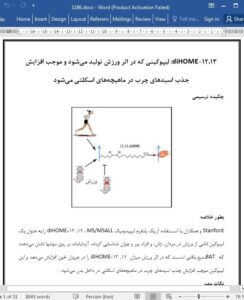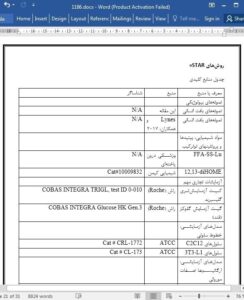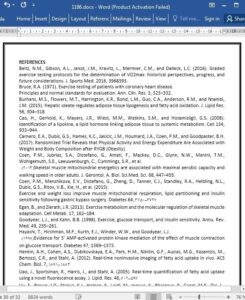Summary
Circulating factors released from tissues during exercise have been hypothesized to mediate some of the health benefits of regular physical activity. Lipokines are circulating lipid species that have recently been reported to affect metabolism in response to cold. Here, lipidomics analysis revealed that a bout of moderate-intensity exercise causes a pronounced increase in the circulating lipid 12,13-dihydroxy-9Z-octadecenoic acid (12,13-diHOME) in male, female, young, old, sedentary, and active human subjects. In mice, both a single bout of exercise and exercise training increased circulating 12,13-diHOME and surgical removal of brown adipose tissue (BAT) negated the increase in 12,13-diHOME, suggesting that BAT is the tissue source for exercise-stimulated 12,13-diHOME. Acute 12,13-diHOME treatment of mice in vivo increased skeletal muscle fatty acid uptake and oxidation, but not glucose uptake. These data reveal that lipokines are novel exercise-stimulated circulating factors that may contribute to the metabolic changes that occur with physical exercise.
INTRODUCTION
Exercise results in adaptations to almost all tissues in the body, and these changes contribute to the beneficial effects of exercise to improve metabolic health. Even a single bout of moderate-intensity exercise can have dramatic effects on glucose metabolism, lowering circulating insulin concentrations and making skeletal muscles more sensitive to insulin (Goodyear and Kahn, 1998). Exercise training, defined as repeated bouts of exercise over a period of weeks, months, or years, can also result in lowering of insulin concentrations and improve glucose tolerance (Egan and Zierath, 2013; Goodyear and Kahn, 1998). Recently there has been great interest in identifying novel circulating factors that mediate the beneficial effects of exercise on health. Most of this focus has been on the investigation of muscle-derived factors, known as myokines (Pedersen and Febbraio, 2008), and we and others have also hypothesized that there may be exercise-stimulated adipokines that mediate some of the benefits of exercise on health (Stanford and Goodyear, 2016; Stanford et al., 2015a).











